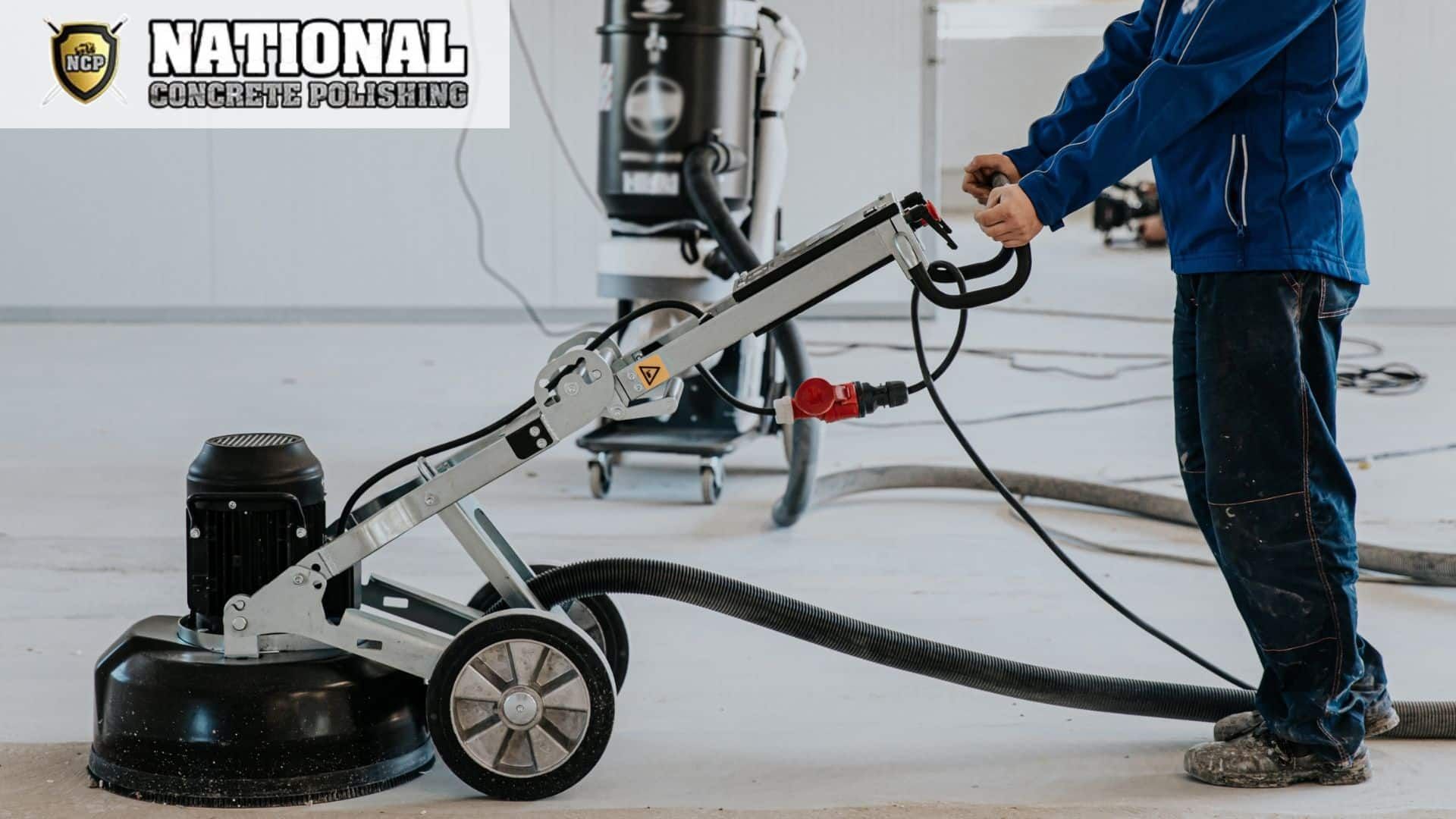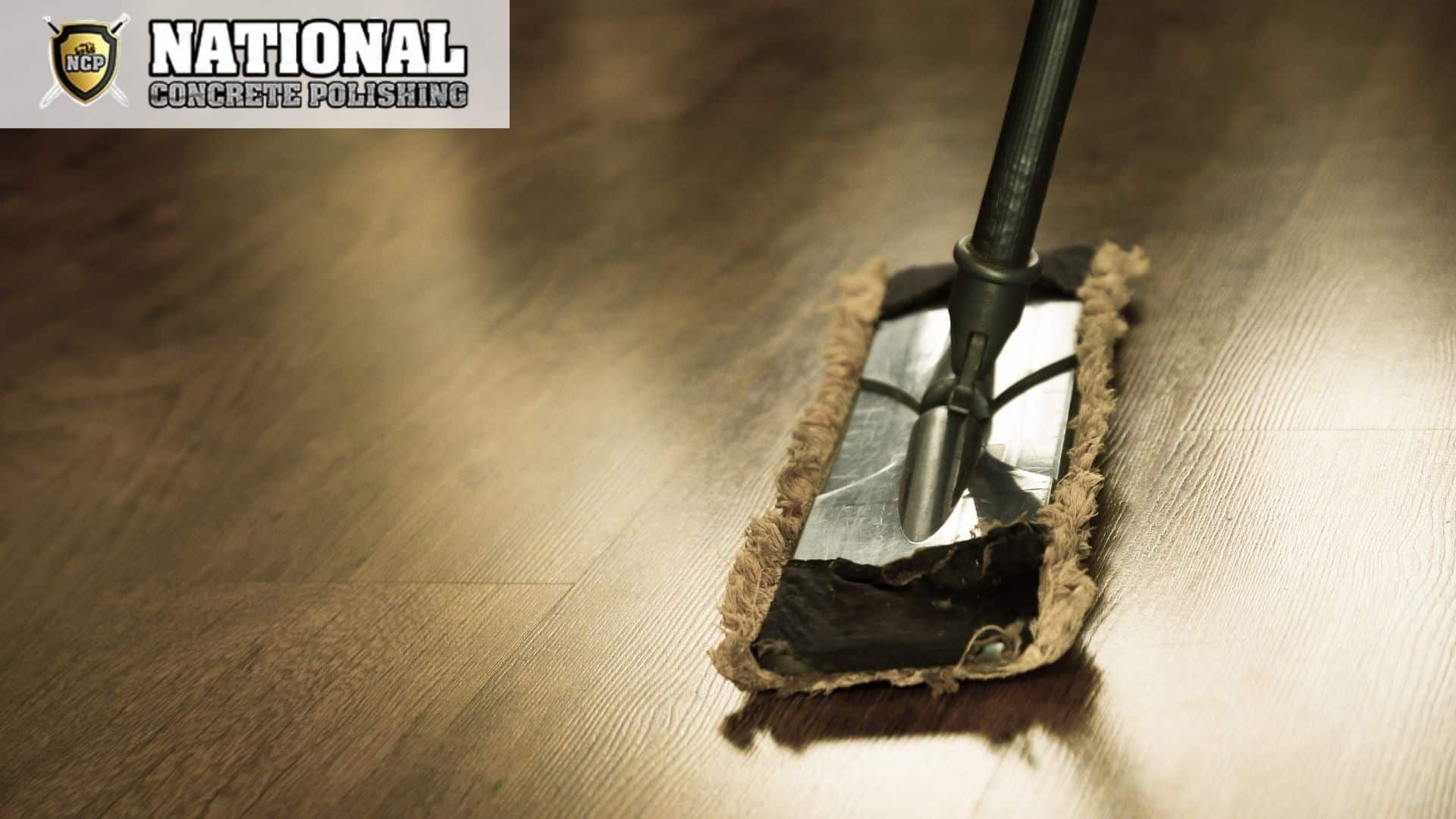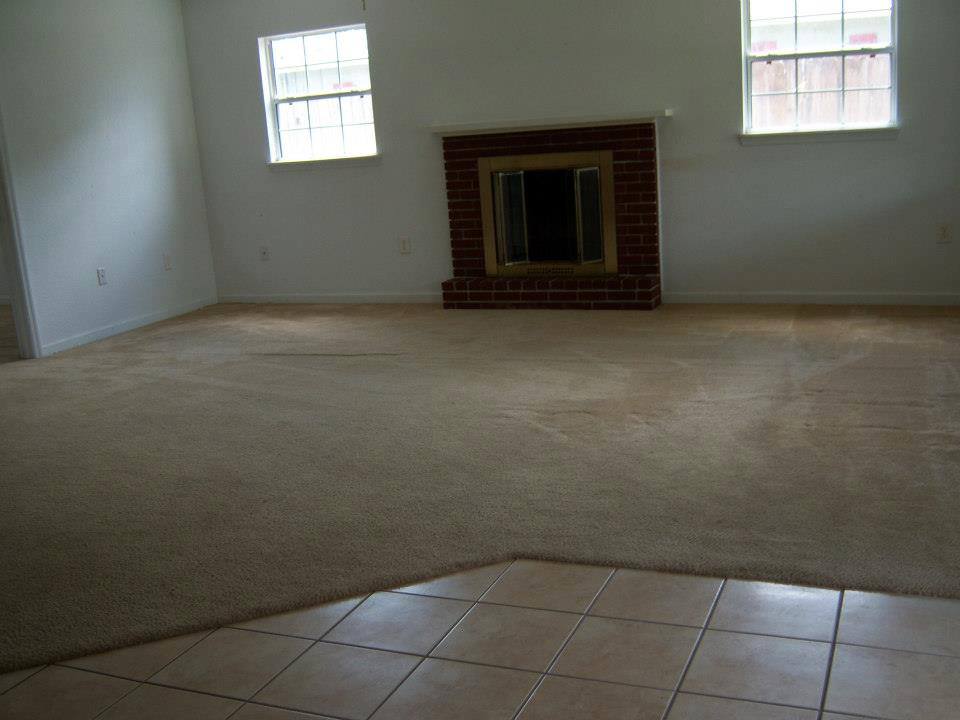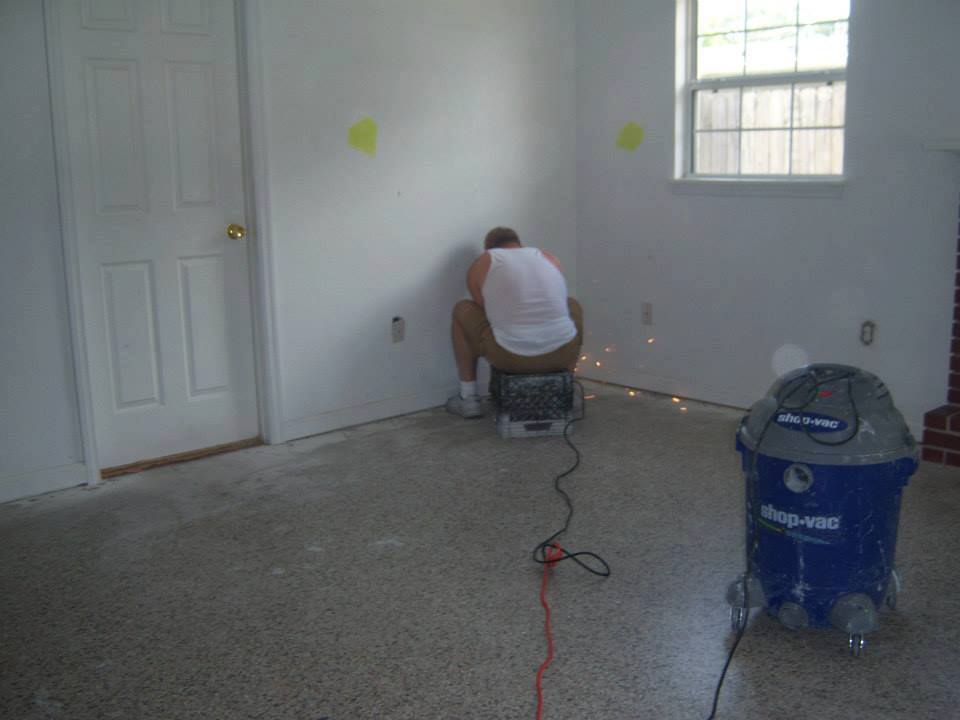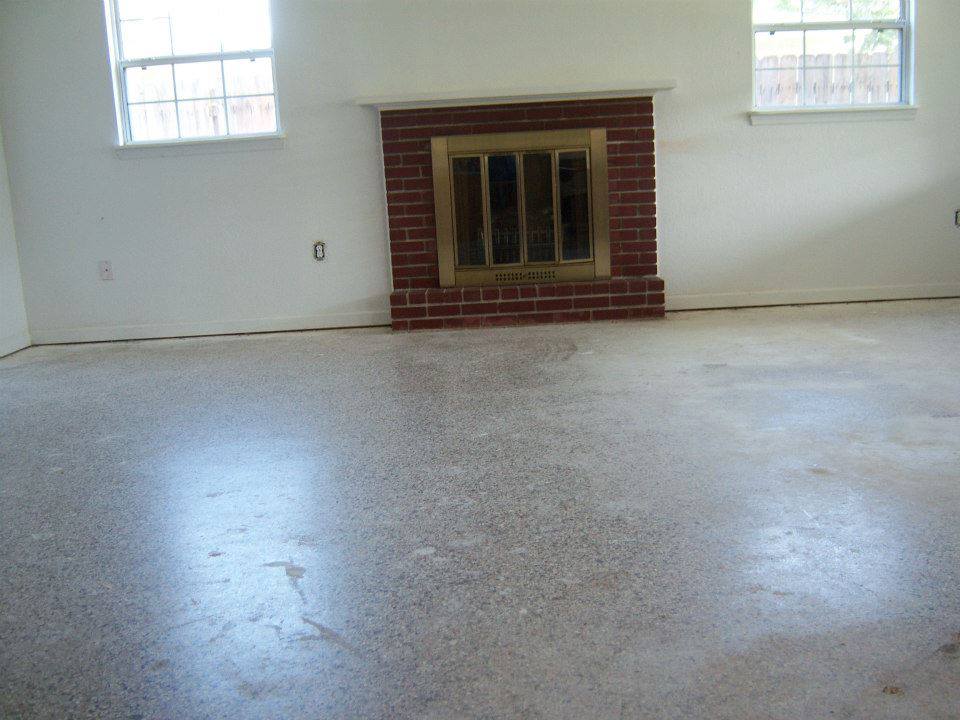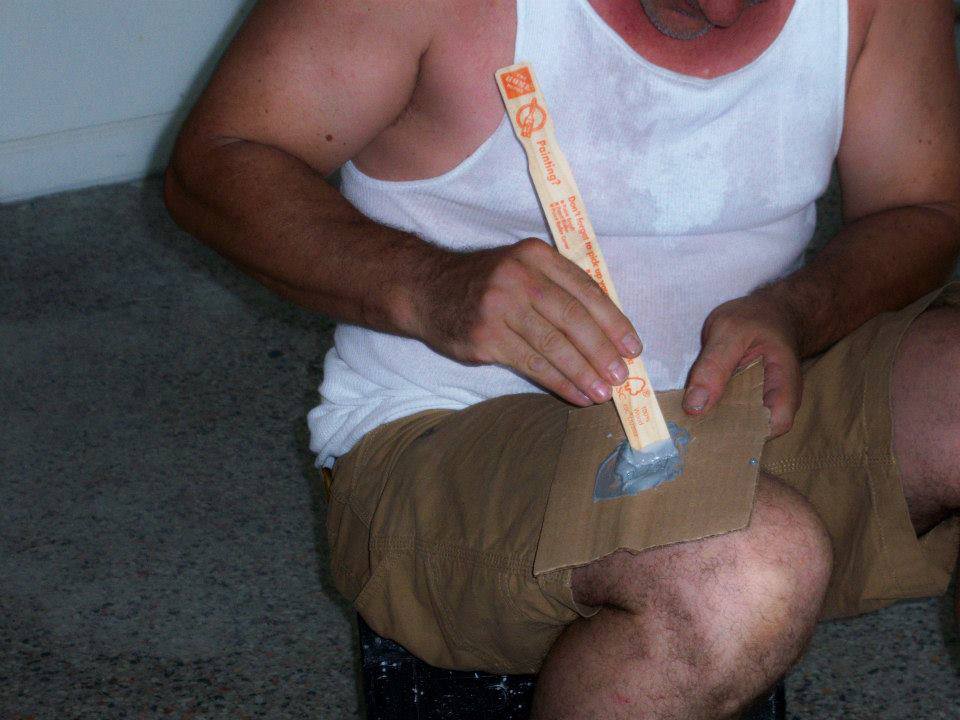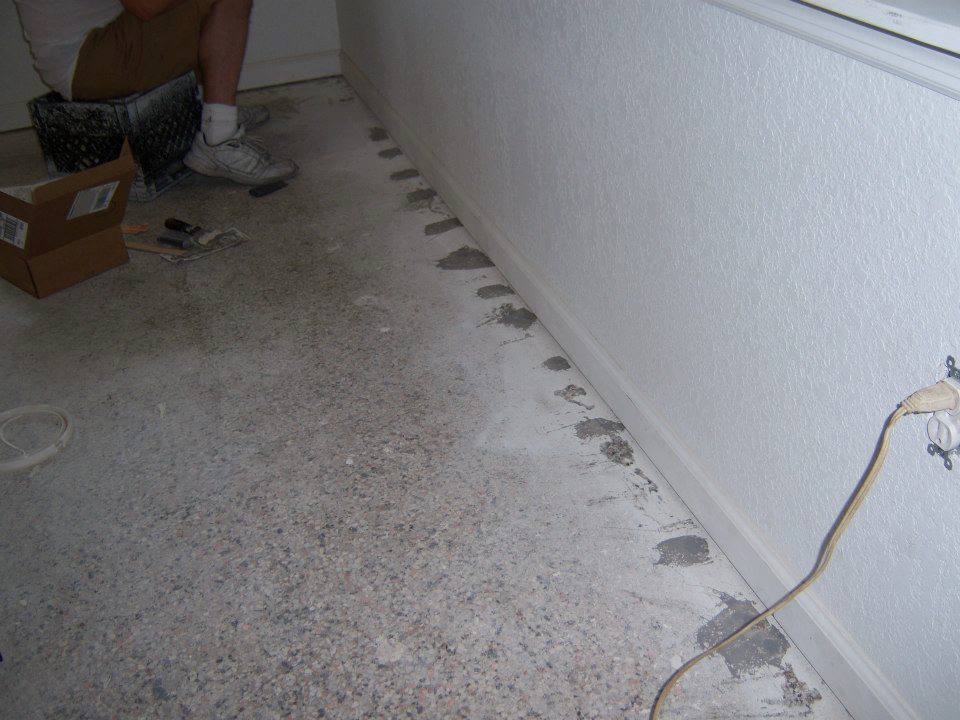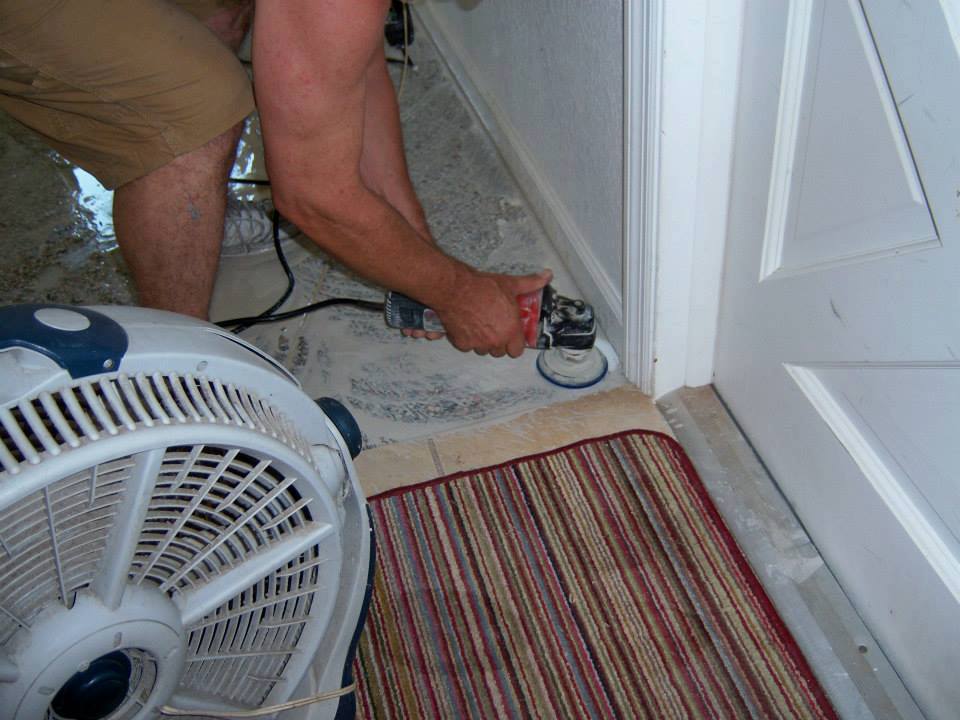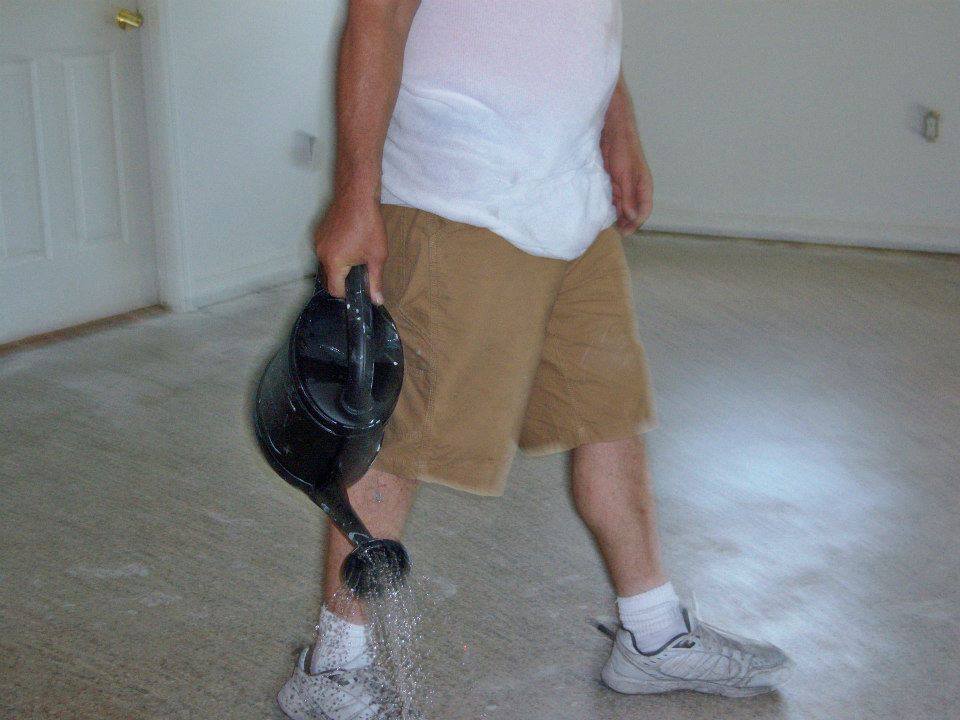Power Washing Epoxy Garage Floors: Do’s, Don’ts, and Best Practices
Shockingly, 73% of homeowners don’t realize their epoxy garage flooring could last a decade with proper care—tripling its typical lifespan. This resilient surface has become a top choice for its sleek finish and ability to withstand oil spills, heavy tools, and seasonal temperature swings. But its durability depends on one critical factor: how you clean it .
Epoxy coatings form a seamless shield over concrete, creating a non-porous barrier against stains and moisture. While this makes garage floors easier to maintain than bare concrete, improper cleaning methods can degrade the finish over time. High-pressure washing, for instance, requires specific techniques to avoid damaging the protective layer.
Understanding your flooring’s needs starts with analyzing garage usage. Heavy foot traffic , vehicle leaks , or stored chemicals demand tailored cleaning strategies. Seasonal factors like road salt in winter or pollen buildup in spring also influence maintenance routines. This guide clarifies safe practices for preserving your floor’s glossy appeal while avoiding costly mistakes.
Key Takeaways
- Epoxy garage floors last up to 10 years with proper care versus 2-3 years without maintenance
- The coating’s chemical-resistant properties protect concrete from stains and wear
- Cleaning frequency depends on vehicle use, foot traffic, and local climate conditions
- Pressure washing requires precise techniques to prevent surface damage
- DIY cleaning works for routine upkeep, but professionals handle deep stains effectively
Can I power wash my epoxy garage floor?
Many property owners wonder about using high-pressure cleaning methods on sealed concrete surfaces. While effective for tough stains, this approach requires careful execution to protect your investment.
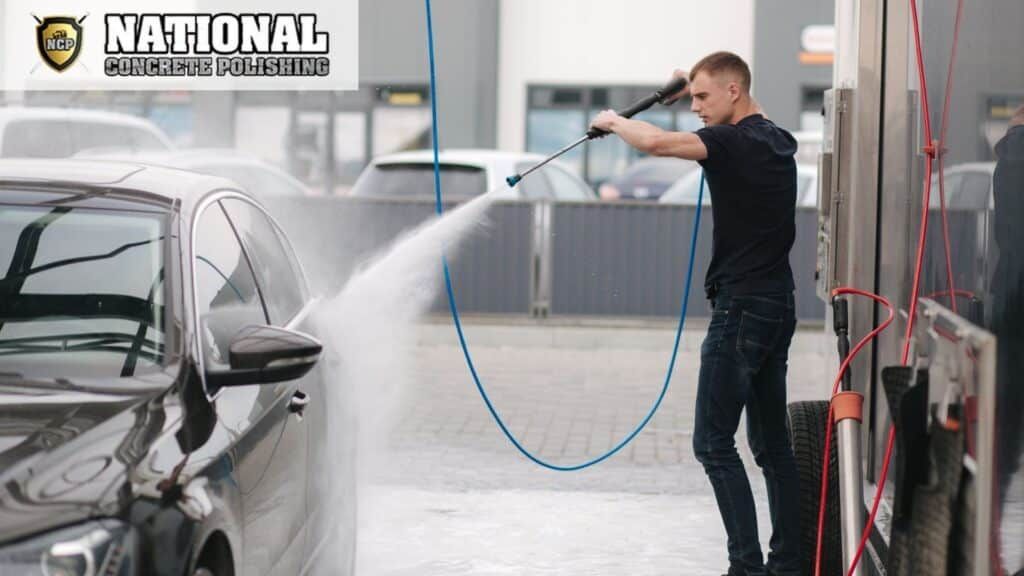
Benefits and Considerations
Professional-grade equipment removes embedded dirt faster than traditional scrubbing. Key factors for success include:
- Using surface cleaners to control spray patterns
- Maintaining water temperatures below 120°F
- Keeping nozzle distance at 12-18 inches from surfaces
| Safe Scenarios | Risky Situations | Recommended PSI |
|---|---|---|
| Oil/grease stains | New installations ( | 800-1200 |
| Mold/mildew growth | Cracked coatings | 1000-1500 |
| Industrial debris | Peeling surfaces | 500-800 |
When to Avoid Power Washing
Recent applications (under four weeks) need gentle cleaning until fully cured. Damaged areas require patching first – high-pressure streams can worsen existing flaws. Always check manufacturer warranties before proceeding.
Proper technique preserves the glossy finish while removing contaminants. For persistent stains or uncertainty about surface conditions, consult certified professionals specializing in resin-based floor systems.
Understanding Epoxy Flooring and Its Challenges
Epoxy systems transform ordinary concrete into resilient surfaces through a chemical reaction between resins and hardeners. This fusion creates a permanent bond with your substrate, forming a non-porous shield against daily wear. Unlike traditional options with joints, these seamless installations prevent grime buildup in hidden crevices.
Properties and Durability of Epoxy
The resin-hardener mixture cures into a plastic-like layer that resists automotive fluids, solvents, and abrasions. Industrial-grade formulations withstand impacts from heavy tools without cracking. However, prolonged UV exposure can cause yellowing in uncovered areas over time.
Thermal stability allows these surfaces to handle temperature swings from -40°F to 300°F. This makes them suitable for regions with extreme seasonal changes. Properly cured coatings maintain their glossy appearance for years under moderate use.
Common Stains and Contaminants
Garage environments introduce specific threats to sealed surfaces. Motor oil creates slippery patches if left untreated, while brake fluid can soften the coating. Tire marks from hot rubber require immediate attention to prevent permanent discoloration.
| Contaminant Type | Recommended Cleanup Time | Potential Damage |
|---|---|---|
| Battery acid | Within 15 minutes | Surface etching |
| Rust particles | 24 hours | Discoloration |
| Organic matter | Before drying | Bacterial growth |
| Road salt | Weekly removal | Corrosion acceleration |
Hydraulic fluids and paint thinners demand specialized cleaners to avoid chemical reactions. Seasonal elements like de-icing agents increase cleaning frequency during winter months. Regular inspections help identify compromised areas before stains penetrate the protective layer.
Preparing Your Garage Floor for Deep Cleaning
Proper preparation separates successful deep cleans from surface-damaging disasters. Three out of four cleaning professionals agree that meticulous setup prevents 90% of common epoxy surface issues during maintenance.
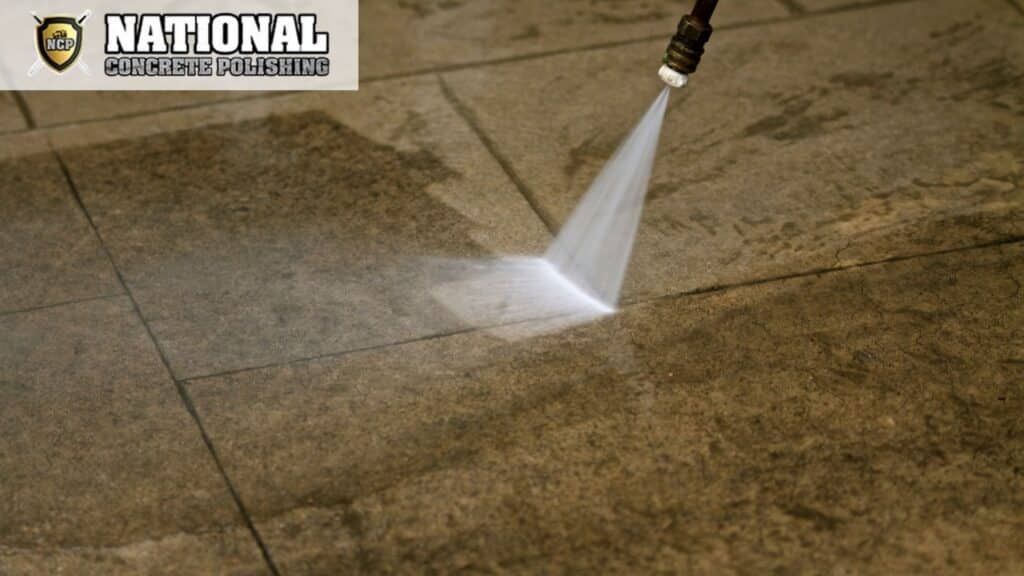
Removing Debris and Pre-Cleaning Steps
Clear the entire space first. Remove vehicles, storage bins, and movable tools. Sweep thoroughly using stiff-bristle brooms for stuck particles. Follow with a shop vacuum to collect finer materials.
Complete the process with microfiber dust mops. These capture microscopic grit that standard methods miss. Pay extra attention to corners where debris accumulates.
Safety and Equipment Setup
Always wear ANSI-approved safety glasses and rubber-soled shoes. Position your pressure washer on stable ground with these checks:
- Confirm nozzle tip (25-degree spray pattern recommended)
- Verify hose connections for leaks
- Set PSI below 1500
Test settings on a 2×2 ft section near the garage door. Adjust distance until water stream glides without lifting the coating. Protect walls with plastic sheeting and ensure drains can handle runoff.
| Safety Gear | Equipment Checks | Surface Protection |
|---|---|---|
| Impact goggles | Nozzle inspection | Corner masking |
| Waterproof gloves | PSI calibration | Drain covers |
| Knee pads | Hose pressure test | Wall barriers |
Power Washing Techniques and Best Practices
Proper equipment selection transforms routine maintenance into a surface-preserving process. The right tools remove contaminants while protecting your investment’s structural integrity and visual appeal.
Choosing the Right Pressure Washer and Accessories
Electric models work best for residential use, offering 1300-2000 PSI for safe cleaning. Follow these guidelines:
- 25° nozzles create fan-shaped sprays that minimize coating stress
- 2.5 GPM flow rates balance cleaning power with water conservation
- Surface cleaner attachments prevent streaking and overspray
| Washer Type | Max PSI | Best For |
|---|---|---|
| Gas-powered | 3000+ | Industrial settings only |
| Electric | 2000 | Home garages |
| Battery | 1800 | Small areas |
Optimal Methods: Hot Water, Cleaning Solutions, and Brush Use
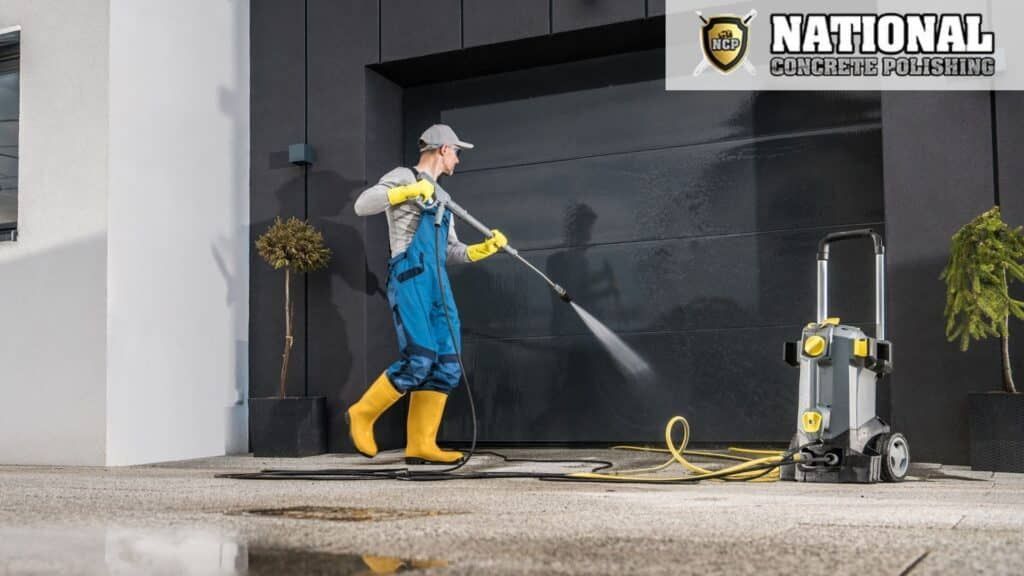
Cold water preserves epoxy bonds better than heated alternatives. Combine these elements for maximum effectiveness:
- Purple Power degreaser (undiluted for oil stains)
- Elemental Biological Cleaner for organic residues
- Stiff-bristle deck brushes for corners
Work in 4×4 ft sections using overlapping passes. Maintain 18″ distance from surfaces and keep the wand moving. Rinse thoroughly after applying solutions to prevent chemical buildup.
Professional Advice and Maintenance Tips
Maintaining pristine surfaces requires strategic planning and proven techniques. Experts at National Concrete Polishing recommend combining daily upkeep with scheduled deep treatments to preserve both appearance and durability.
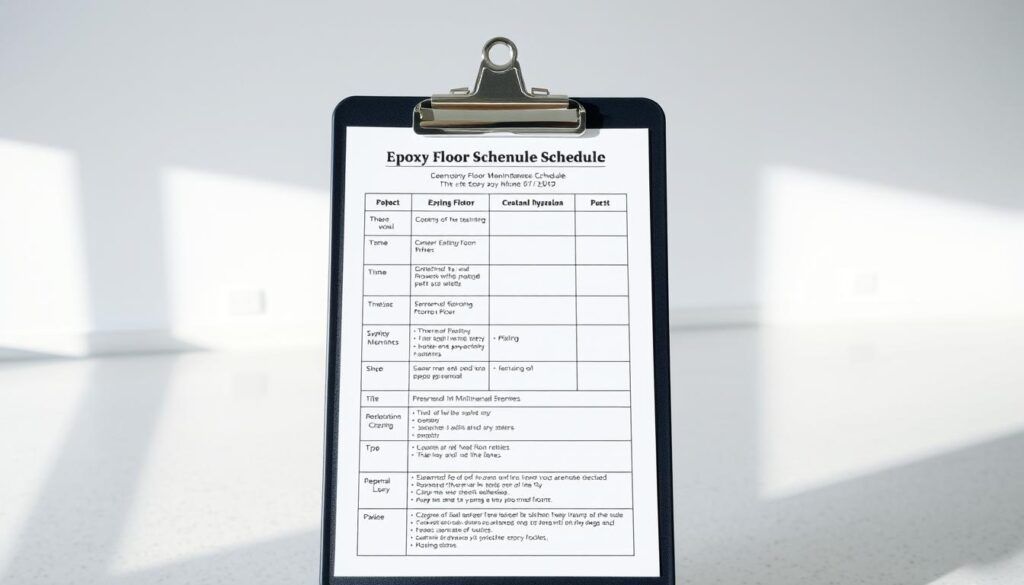
Establishing a Regular Cleaning Schedule
Create a three-tier system for optimal results:
- Daily: Sweep with microfiber mops to remove abrasive particles
- Weekly: Spot-clean spills using pH-neutral solutions
- Monthly: Full-surface rinse with low-pressure washers (under 1200 PSI)
South Florida specialists note that coastal humidity accelerates grime buildup. Their teams use mechanical sweepers twice weekly in high-traffic zones. For home use, consider these product guidelines:
| Surface Condition | Recommended Cleaner | Application Method |
|---|---|---|
| Oil stains | Citrus-based degreaser | Spray-and-scrub |
| Dust accumulation | Neutral pH detergent | Damp mop |
| Chemical spills | Non-enzymatic solution | Immediate wipe |
Subtle Tips from National Concrete Polishing
This Florida-based company shares regional insights through their maintenance programs:
- Place absorbent mats near garage entries during rainy seasons
- Inspect for micro-cracks every 90 days using angled lighting
- Blot spills within 15 minutes to prevent chemical reactions
Their technicians use infrared scanners to detect hidden moisture – a common issue in humid climates. While DIY methods work for routine care, professional assessments help identify subsurface issues before visible damage occurs.
Conclusion
Your garage’s durable surface protection relies more on maintenance habits than initial installation quality. Armed with expert-approved methods, you can now extend your flooring’s lifespan while maintaining its glossy finish. Proper techniques prevent surface degradation from harsh chemicals or abrasive tools.
Regular maintenance preserves the bond between epoxy layers and concrete substrates. Selecting appropriate equipment and cleaning solutions ensures contaminants lift without damaging protective coatings. Strategic scheduling prevents stubborn stains from compromising the surface.
For challenging situations or specialized care, certified technicians offer tailored solutions. National Concrete Polishing provides region-specific expertise honed in South Florida’s demanding climate. Their team addresses unique environmental factors affecting sealed surfaces.
Contact National Concrete Polishing at +1 877-661-7562 for personalized guidance on preserving your investment. Their professionals combine technical knowledge with practical experience to optimize your flooring’s performance year-round.
FAQ
What are the benefits of using a pressure washer on epoxy floors?
Pressure washing effectively removes dirt, grease, and debris without harsh scrubbing. Hot water models can tackle stubborn stains, while adjustable settings prevent surface damage. Regular cleaning preserves the coating’s shine and longevity.
When should you avoid pressure washing epoxy flooring?
Avoid high-pressure methods if the coating is cracked, peeling, or improperly installed. Delaminated surfaces may worsen under forceful water streams. For older or damaged floors, consult professionals like National Concrete Polishing for repairs first.
How do you prepare a garage floor before deep cleaning?
Sweep loose debris and pretreat oil stains with a degreaser. Cover nearby walls or items to protect them from splashes. Test the pressure washer on a small area to ensure settings won’t harm the epoxy layer.
What type of pressure washer works best for epoxy surfaces?
Electric or gas-powered units with 1,200–1,500 PSI are ideal. Pair them with a 25°–40° fan tip nozzle to balance cleaning power and safety. Avoid rotary turbo nozzles, which concentrate pressure and risk chipping.
Can hot water or cleaning solutions improve results?
Hot water softens grease and oil for easier removal. For heavy stains, apply a pH-neutral cleaner or diluted degreaser. Avoid acidic solutions, which may dull the finish. Rinse thoroughly to prevent residue buildup.
How often should epoxy-coated garage floors be cleaned?
Sweep weekly and mop monthly. Deep clean with a pressure washer every 3–6 months, depending on usage. Promptly address spills to prevent permanent discoloration or chemical damage.
What maintenance tips do experts recommend for epoxy floors?
National Concrete Polishing advises using microfiber mops and non-abrasive cleaners. Place mats at entrances to reduce grit. Reapply a UV-resistant topcoat annually in sun-exposed areas to prevent yellowing.


